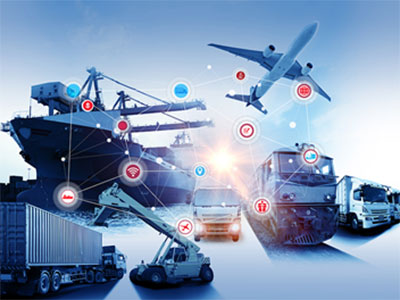Logistics = System of Systems
In attending the Southern California E-Commerce & Logistics Summit, it is clear that focusing on global logistics as a system of systems is paramount (special shout out to Fran Inman for the use of her phrase). Not one link in the supply chain can succeed on its own. For example, you might have a reliable, cost-effective supplier in Asia; however, if the product gets held up in trucks or at the Asian ports, cannot cross the South China Seas because China is aggressively doing military exercises, gets stuck in a line at the Panama Canal due to drought conditions, gets diverted from the Suez Canal due to Iran-backed Houthi rebels, gets stuck in a labor strike or diverts around a natural disaster or other event (such as the Baltimore bridge collapse), or cannot get unloaded at the ports in the U.S. due to labor shortages or technology issues, cannot get picked up at the ports due to lack of trucks or drivers due to regulations, or gets stuck at cross-dock facilities, in warehouses, trucks, rail, or at commercial airports, the entire system comes to a halt. Logistics is dependent on a system of systems.
Latest Trends in Global Logistics: Challenges & Risks
The trends in global logistics relate directly back to the challenges, risks, and opportunities in the system of systems. The highlights of key challenges and risks that pop to mind from the Summit include:
- Regulations overload: As important as sustainability and green concepts are in this industry, the common theme is the urgent need to move from an environment of unrealistic regulations overload to common sense practical progress towards environmental goals combined with business success.
- Technology & Innovations: Both a risk and opportunity, technologies cannot keep up with top-down regulations.
- Cyber security: The more technological advances, the more focus on cyber security required.
- Energy costs & availability: This topic keeps logistics executives up at night! California’s cost of electricity is twice the rest of the country, yet electricity is cornerstone to future plans. Regardless of cost, the electricity and charging stations required to support the future plans are nowhere near a practical reality, and the technology doesn’t yet exist to bring it to fruition.
- Bringing the system of system’s partners together: Each partner in the supply chain (ports, rail, trucks, brokers, manufacturers, beneficial cargo owner, public partners, etc.) has different goals and responsibilities (financial, technology, etc.). Typically, each link is a different company, potentially located in a different country with different issues.
- Theft: Since logistics relates directly to retail, cargo theft and retail theft is a big topic. 58% of ALL cargo theft occurs at the L.A. and Long Beach ports. Since they supply 40% of the country’s products, that is disproportionate.
Opportunities & The Path Forward
Substantial progress has been made. For example, the ports are performing well. In 2024 to date, they are 10% above the pre-pandemic peak and truck dwell times are the lowest since 2019. Rail dwell times are also down. There has been tremendous progress with technology advancements related to achieving sustainability goals in addition to progress with autonomous vehicles, new energy sources such as hydrogen and nuclear etc.
In addition to continuing to be cost efficient and reliable, the future will be bright for those that focus on the following:
- Technology advancements: Technology must be a critical priority to address the challenges and risks while providing additional value to customers. Each link in the global supply chain discussed technology advances, automation, AI, and more.
- Supply chain agility & resilience: We must focus on the appropriate programs to increase agility, resilience, and scalability.
- Collaboration & Partners: The only route to success with the system of systems will be collaborating with our typical and atypical partners (such as competitors).
- Practical solutions to energy: Uncommon common sense will go a long way.
- Practical regulations (fewer focused on what’s most important) with an objective of freeing up companies to focus on innovation to achieve environmental goals.
- Innovation: Only innovators will be in business down-the-line.
- People & workforce development: Goods movement can provide value-added jobs to communities that propel our goods delivery systems (Amazon, Walmart, etc.). We must be ahead of technology advances and providing education, training and workforce development.
- Process improvement: The ports are moving from pull to push to accelerate goods through the ports to trains and warehouses. People and technology must be connected with upgraded processes. For example, utilize SIOP (Sales Inventory Operations Planning) to best assess how to optimize your manufacturing and logistics network with our customer demand. If you want to learn more about how to implement these types of strategies, download our complimentary e-book, SIOP: Creating Predictable Revenue and EBITDA Growth.
Logistics has gained a “seat at the table” and is cornerstone to success. If goods don’t move, the system of systems grinds to a halt, impacting businesses, consumers and the economy.
If you are interested in reading more on this topic:
Diversify to Thrive in Manufacturing and Supply Chain



